#oil stations
Explore tagged Tumblr posts
Text
Why You Should Buy Oil Stations for Your Business: A Guide for Efficient Oil Dispensing
When it comes to managing oil distribution in an industrial or automotive setting, efficiency and reliability are key. Whether you're running a garage, a service station, or an industrial plant, having a high-quality oil dispensing system is crucial. If you're looking to enhance your operational performance, it’s time to buy oil stations for your business.
Oil stations streamline the process of oil dispensing, making them a critical component for businesses that need to manage large volumes of oil. In this article, we will explore the reasons why investing in oil stations can benefit your business and why Empire Lube Equipment is your ideal partner.
What Are Oil Stations?
Oil stations are specialized systems designed for the efficient dispensing of oils, lubricants, and other fluids in an industrial or automotive setting. These stations come with various components like oil tanks, pumps, and dispensing nozzles to make the distribution of oil quick and hassle-free. When you buy oil stations, you're investing in a system that simplifies oil management, increases productivity, and reduces the likelihood of spills or waste.
Benefits of Oil Stations
Increased Efficiency Oil stations make it easy to manage and dispense oil without any delays. With properly installed systems, workers can quickly distribute the required amount of oil, saving time and reducing downtime. This is particularly important in high-demand environments such as auto repair shops, where delays can impact customer satisfaction.
Reduced Waste Manual oil handling often leads to spillage, leakage, or overuse. When you buy oil stations, you significantly reduce waste by ensuring precise oil measurements. This not only saves costs but also ensures environmental compliance by preventing spills.
Cost-Effective Solution Investing in an oil station means you won't have to constantly purchase smaller containers of oil or lubricants. Bulk storage and dispensing offer a cost-effective solution, especially for businesses that deal with high volumes of fluids.
Improved Safety Oil spills can create hazardous working conditions. A reliable oil station minimizes the risk of accidents, ensuring that your work environment is safe for employees.
Why Buy Oil Stations from Empire Lube Equipment?
If you're looking to buy oil stations, Empire Lube Equipment offers a wide range of high-quality solutions tailored to meet the needs of various industries. With years of experience, they provide customized systems that ensure efficient and safe oil dispensing. Here’s why you should consider them:
Expertise: With a long-standing reputation in the industry, Empire Lube Equipment knows the ins and outs of oil management systems. Their expertise ensures you get the right product for your needs.
Quality Products: Empire Lube offers durable and reliable oil stations that are built to last, reducing the frequency of repairs and replacements.
Customer Support: From installation to maintenance, their customer support team ensures a seamless experience when you buy oil stations from them.
Conclusion
When you buy oil stations, you're making a smart investment that will improve efficiency, reduce waste, and enhance safety in your operations. Oil stations are essential for businesses that need reliable oil management, and Empire Lube Equipment is your go-to provider for high-quality solutions. With their expertise, you can ensure that your oil dispensing system meets all your operational needs.
0 notes
Text

Living dead wreck with an oil spill brain. Can't keep time from slipping away
#tales from the gas station#tftgs#gas station jack#jack townsend#artsing around#I doubt I can elaborate on this anywhere else so I'll say it here: the oil spill imagery represents his memories and mental state#something that should never escape him yet it does#not only hurting him but also damaging the world around him#difficult to absolve‚ uncomfortable‚ and only gets worse with time#toxic but he doesn't mean to be‚ doesn't want to be#he just can't contain the spill#(also I think it just compliments his sad wet cat energy)
84 notes
·
View notes
Text
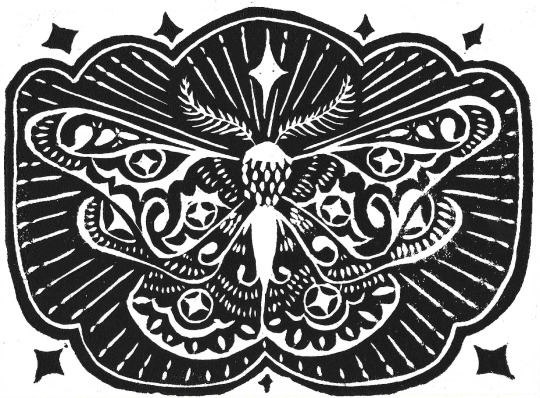
I think everyone's gotten theirs by now, so please enjoy the linocut I designed, carved, printed on cards and sent out for February's International Correspondence Writing Month :)
[Image Description 1: A black linocut print featuring a moth with sparkling star eye patterns on its six wings and surrounded by a starburst of lines and small stars. End description.]
Some process and more details under the cut - including the other stamps I carved to go on the envelopes and inside the cards!
Please enjoy my chaotic printing station and my beautiful stack of shelves, baskets, and my baking racks being used as a place for all the prints to dry (well, most of them)


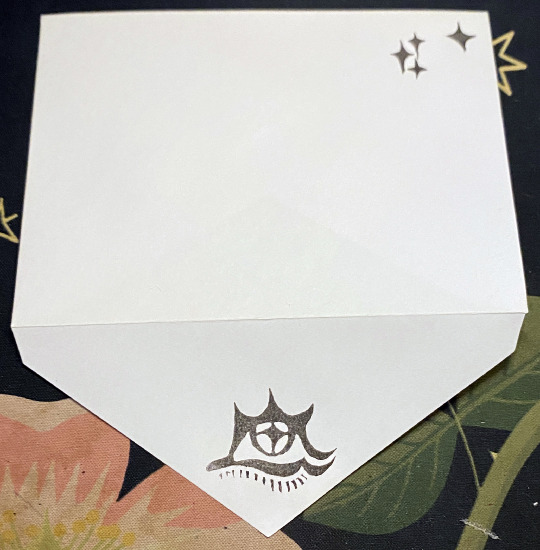
I also carved individual stamps of the starry eyeballs based off the eye shapes in the moth's wings. I love love love love how they came out, and also had a lot of fun with the variety of little star stamps I made to embellish things with.
[Image ID 2: A photo of my kitchen table overtaken by a precarious stack of wire shelves and racks that are covered in drying prints. In front of the drying prints is my printing surface where the ink, roller, and the linocut are visible. Image ID 3-4: Photos of the envelopes used to send the cards, they've got stars stamped on the front and a large starry eye stamped on the flap. The eyes are two different variations of a similar design and match the eye pattern on the moth's wings. End Description.]
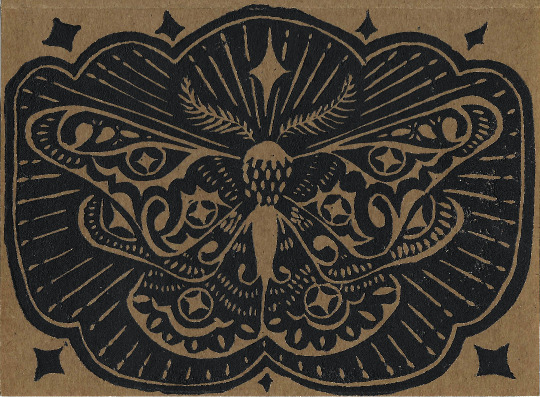
For funsies, please also enjoy how gorgeous this design came out on brown paper
[Image Description 5: Another image of the same print, this time on brown paper intead of white]
#my art#artists on tumblr#printmaking#art#linocut#moth#sparkle sparkle#carving is so nice#printing was chaotic#I need a better waterproof printing ink for this#I don't have the set up for oil-based#and woo#my makeshift january-february cardboard box spray fixative station in the back yard is not a permanent solution#thank god the weater was good#I'm out of blank cards now though#but I think I bought them in college in like 2009 so they had a good long run#International Correspondence Writing Month#InCoWriMo 2024
192 notes
·
View notes
Text

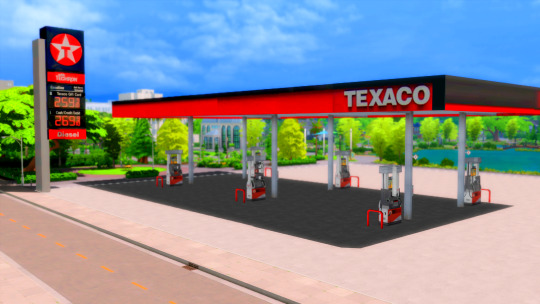

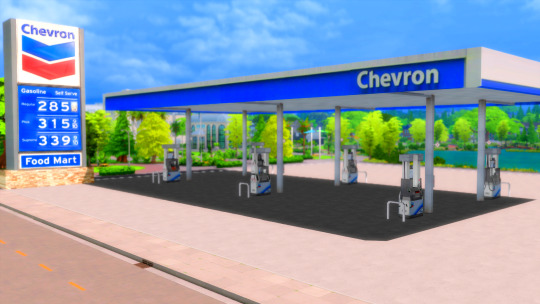
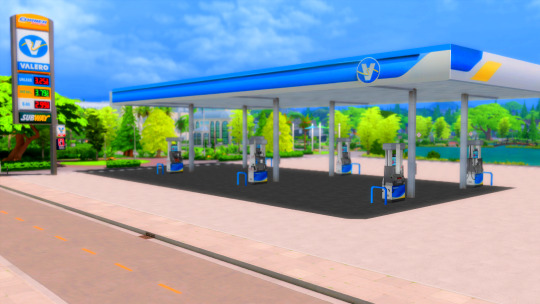

Deco Gas Stations CC
NOW PUBLIC!!
Shell Fuel & Mart
Deco Gas Station (6 Swatches)
Can be paired with Gas Station Signs CC
Download: Patreon
#ts4cc#sims 4 custom content#ts4#sims 4 simblr#ts4 simblr#the sims 4#sims 4 cc#sims 4#simblr#the sims cc#deco cc#base game cc#exxonmobil#valero#texaco#shell oil#gas station
487 notes
·
View notes
Text

Christ Carrying the Cross
Artist: Sebastiano del Piombo (Italian, 1485-1547)
Date: 1515–1517
Medium: Oil on panel
Collection: Art Institute of Chicago, Chicago, IL, United States
Description
Here, Simon of Cyrene assists Jesus, emphasizing the heavy weight of the cross on his shoulders. A Roman soldier stands behind, his jeering face just visible in the darkness. In the background, the tightly packed composition opens up onto a crowd assembling at the foot of the hill of Golgotha, with two crosses barely visible. The luminous landscape is a hallmark of the artist's Venetian training. The painting's dramatic visual impact is a result of the powerful diagonals of the cross; the dynamic, almost sculptural quality of Christ's clothing; and the pathos of his expression.
The Art Institute's version is an autograph replica of a painting—now in the Museo del Prado, Madrid—made for Jerónimo Vich y Valterra, the Spanish ambassador to Rome. Other versions survive in the State Hermitage Museum, Saint Petersburg; the Monasterio de las Descalzas Reales, Madrid; and the Szépmüvészeti Múzeum, Budapest.
#painting#oil on panel#stations of the cross#christianity#jesus#roman soldier#cross#golgotha#simon of cyrene#biblical art#16th century painting#sebastiano del piombo#italian painter#new testament#holy bible#christian art
27 notes
·
View notes
Note
For the prompt list, nanny/single parent obikin would be amazing!!
(from this prompt list)
(the first time I answered this prompt two years ago, the nanny anakin au was born)
so to do something different, here's some gffa widowed anakin, nanny (sort of) obi-wan!
(2.5k)
It is hard to find time to grieve. There are too many things to do. Too many appointments to make, too many decisions Anakin isn’t sure he’s qualified for. Some decisions are easier than others. For example, the funeral will be on Naboo. There will be two services: a public one to honor Padmé’s public service, and a private one to honor who she was as a person. The casket will be closed, because his wife died when her cruiser exploded. There isn’t much left to bury anyway.
But some decisions are harder. Which flowers should go on her casket. What songs would she want sung and who should sing them? Would she prefer her grave closer to her ancestral home or the home she created in her adulthood?
If she told anyone the answers to these questions, it wasn’t Anakin. But then, the people who knew her best, who loved her most, died with her. Sabé, Rabé, Saché, Yané, all of her handmaidens—an assassination such broad strokes that it was impossible for it to fail.
So Anakin chooses Yali lilies, because Leia’s eyes linger on them the longest. He chooses a small Nabooian folk band to play after her service because their music is the first thing to make Luke lift his head from his coloring books in days. He formally requests that her body be buried among her ancestors, and the Nabierres agree immediately.
And he keeps telling himself that he will grieve, but there is so much to do.
And then—then there’s after the funeral. Then there’s the rest of his life, sprawling out before him in a long, hazy road.
There are more decisions to be made.
There are people who have opinions on them now, people who sat back and let Anakin muddle through flower arrangements and kriffing seating charts, who now step in to peer over his shoulder, monitor his every breath.
Should he really move the children back to Coruscant? Does he truly plan to continue to work as a mechanic in the Mid-Levels? Should he not think of the children, their needs? How can he support them on the thin amount of credits he makes? Would it not be better for the children to live on Naboo in the care of their grandparents and their extended family?
It would be what Padmé would have wanted.
Anakin cannot care about what Padmé would have wanted, because she isn’t here. Not to argue with him, not to make her wants known. She is dead. She doesn’t get to haunt him in the waking world too.
“What do you want?” he asks plainly, sitting down across the table from his two children. The twins blink back at him. Leia has finished her cereal. Luke has barely touched his.
“Bacon,” Luke says.
Anakin hadn’t meant for breakfast, but he figures it’s as good of a start as any. “Alright,” he agrees.
He stands once more and goes to the kitchen. It’s not exactly his domain. It was never Padmé’s either. The way Padmé grew up, food was made once you requested it—by droid, by cooking staff. Not by the hand of a Nabierre.
The way Anakin grew up, food was cobbled together carefully, sparingly no matter how much you requested it. And no matter how you cooked it, it always tasted a little like dust, which took the joy out of experimentation.
But the serving staff have been dismissed for the past two weeks to give the family time and space to grieve in private.
(Padmé’s parents have been given a schedule for visiting hours for that exact reason.)
Anakin locates the pan; then, he locates the package of bacon strips.
When he glances up, both twins are watching him over the edge of their barstools, tiny faces showing both skepticism and incredulity.
“I want to know what you want to do,” Anakin says, raising his voice as he places the pot over the heating plate, the meat in a moment later. “Do you want to stay here with your grandmother and grandfather? Do you want to go back to Coruscant?”
The twins are quiet. Anakin twists his neck to look at them again, and they’re looking at each other, silently communicating the way only twins can.
“Where will you be?” Leia finally asks, looking at him with narrowed, suspicious eyes, bottom lip already jutting out.
Anakin blinks. “Wherever you are,” he answers.
“You won’t leave too?” Luke asks rather tremulously.
Anakin takes the pan off the heated plate and turns it off with a decisive flick of his wrist. “Of course not,” he says. “Come here.” He crouches down and barely has enough time to open his arms before the twins are there, pressing in as close as they can get to him. He holds them back just as tightly in return.
“I’m not going anywhere,” he promises into Leia’s hair. “Not without you two.”
—-----------------
It becomes apparent fairly quickly that this is, by necessity, a lie.
The twins don’t want to stay on Naboo, which Anakin is secretly incredibly grateful for. He doesn’t want to either, but he knows he’d just be called selfish should he express the opinion.
But the twins don’t want to go back to Coruscant either. This makes sense as well. It would be incredibly jarring for them to go back to living in the quarters they shared with their mother, her Upper Coruscanti apartments in the nicest district of the planet, without her there.
Anakin wishes it were as simple as sticking a pin on a planet and deciding to uproot the entirety of his family to live there.
But it’s not.
Perhaps if he were still young, nineteen, newly free and in love with the taste of that freedom, it would be.
But he’s a widower now. He has his children to think about, their futures. Any planet he chooses must have what they need as well.
And they are four year olds who have just lost their mother. Their needs are numerous.
What makes the decision for him in the end is that his boss knows a man from Stewjon, who is willing to hire him. Who is willing to pay a premium for his expertise with mechanics.
Anakin doesn’t know the first thing about Stewjon, other than that it’s an ocean planet in the Inner Core and his dead wife always said the Senators from Stewjon were so frigid and tight-lipped because they spent the first few days of each visit trying not to be seasick on the Senate floor.
Anakin isn’t sure why this is the very first thing he tells the man—his potential boss—he meets behind the counter in the mech-shop on Stewjon.
He’s left the children with their grandparents for the week—long enough to fly from Naboo to Stewjon, meet with his potential employer, interview, apply his work practically, and fly back out.
He’d explained to both twins why they had to stay on Naboo. He’d explained many times. That hadn’t changed the betrayed look Leia had worn as she saw him off. It hadn’t wiped the tears from Luke’s eyes.
“Ah, well, I can’t say I’ve heard that one before,” the mechanic says. He sounds amused, and Anakin is incredibly shocked to hear a Coruscanti accent. Everyone he’s spoken to since arriving planetside has had such a heavy brogue that he’d honestly struggled to understand their directions to the shop—Kenobi & Sons.
Anakin lets himself look again at the man behind the counter. He’s rather clean for a mechanic, he decides. His beard is red, a common factor around these parts apparently, but his beard is short and neat, trimmed to accentuate the strong lines of his jaw. His eyes are a stormy blue, the kind of blue that matches the Stewjoni ocean.
“Between you and me though,” the man smirks and leans onto the counter with his elbow. His tunic is dark gray, white starchy fabric peeking out beneath the v-necked collar. “I’ve never been a fan of Stewjoni politicians anyway.”
“Oh?” Anakin asks, sidling a step closer to the counter. The man has the beginnings of gray at his temples, and his eyes are lined with wrinkles. They don’t make him look old though, Anakin decides. They make him look…well-lived.
“I’ve not a head for politics much at all,” his future employer shakes his head slightly with a small smile. His eyes flick up and down Anakin’s face, lingering on his lips and then lingering longer on the scar over his brow. Anakin feels rather flushed under the inspection, and he shifts his weight forward until he’s leaning up against the counter too.
There’s something about this man that’s rather…magnetic. It pulls him in. It makes him want to linger.
Good characteristic for a shopkeeper to have, though Anakin privately decides that the man before him has a face that’s wasted on mechanics, buried under some ship’s underbelly in a backroom.
“Me neither,” he admits, a moment too late to sound anything but highly distracted. It makes the man smile again though, a flash of straight white teeth.
“Is there anything you do have a head for then?” he asks. His tone is light, airy, rather teasing.
This is the strangest interview Anakin has ever had.
“Um,” he says. “Well. There’s mechanics.”
“Oh?” The man’s eyebrow lifts at an elegant angle. He props his chin on the palm of his hand and looks up at Anakin through his eyelashes. “Then why come here to us then?”
“Um,” Anakin says, and not because the man looks rather unfairly flattering like this, amber eyelashes in sharp relief against the blue of his eyes.
They’re interrupted by the sounds of clattering in the backroom, stomping and cursing. The man before him straightens with a slight sigh and picks up the closest flimsipad. “And what brings you in here today, sir?” he asks rather loudly, pitching his voice back to the other room of the shop pointedly. “Problem with your speeder? Serving droid? Cruiser? If it’s your astromech droid, I regret to inform you that I’ll have to refuse you service on account of the fact that I don’t particularly care for them.”
Anakin thinks he splutters, but whatever noise he makes is definitely drowned out by the rather irritated shout of Obi-Wan! that comes from the back.
A moment later, a man storms through the door, looking annoyed. "We will service an astomech if that's what's broken, Obi-Wan."
Now this is a man that Anakin can believe is a mechanic. His nails are blackened with oil, and his bare, burly arms carry smudges of the stuff. He’s much broader than the man��Obi-Wan—that Anakin had been talking to. He’s bald with a reddened scalp and a rather large red beard that’s the antithesis of the other man’s in every way. His clothes are dirty, loose, and the color of ash. He looks older too—whereas Obi-Wan could easily be in his thirties, this man must be pushing fifty.
He snaps at Obi-Wan in a language that Anakin doesn’t understand. Obi-Wan shrugs and hands over the flimsi pad without argument.
“Um, actually,” Anakin says, feeling incredibly wrong-footed. “Which one of you is Kenobi?”
“I am,” both of them say. Obi-Wan’s smirking slightly. The other man’s voice is louder, carrying that Stewjoni accent so obviously lacking in Obi-Wan’s speech.
The older man closes his eyes as if he’s praying for patience. “We both are,” he says. “Though if your ship’s malfunctioned, sir, I’m the Kenobi you want to see. This one’s good for naught but magic tricks.”
“I have been told I’m rather good at other things,” Obi-Wan turns his smirk full-force at Anakin, dropping his eyes to Anakin’s lips once more.
“My name is Anakin Skywalker,” he says very quickly in a very normal tone of voice that is most definitely not a squeak. “I’m here to interview for a position. As another mechanic.”
“Oh,” the older Kenobi says.
“Oh,” the younger Kenobi says in a much different tone.
The older Kenobi pinches at his nose for a moment before turning around the counter and offering his hand. “Ben,” he says. “Ben Kenobi.”
Anakin takes his hand and shakes it, eyes traveling back to Obi-Wan. Is he supposed to shake his hand too?
“I’m the Son in the sign,” Ben says gruffly as if that answers his question.
“I’m the reason it’s plural,” Obi-Wan adds, busying himself with the contents of the counter. From what Anakin can tell, the man is just messing up the carefully organized piles of receipts.
He decides that he would rather not get the job than point this out to Ben.
Ben huffs out something in Stewjoni that sounds downright insulting, but that doesn’t stop Obi-Wan from smiling sunnily up at Anakin. “My brother enjoys bitching and moaning that I came back home when I was seventeen, but he’s awfully quick to foist his children off on me when he’s called to shift at the rig offshore and Marci’s off-planet too.”
Anakin blinks. He feels like that’s the safest answer.
“Only thing good that blasted Jedi Order ever taught you was how to handle younglings,” Ben says, and then spits on the ground as if the words themselves have left a bad taste in his mouth.
Anakin blinks and wonders if he should say something to remind the brothers that he’s here. For an interview. “And my magic tricks,” Obi-Wan rolls his eyes slightly before catching Anakin’s eye and winking. With a wave of his hand, a flimsi-sheet flies over the counter and into Anakin’s chest. He catches it unthinkingly. “Would you like to sign in, sir?” “Get out of here,” Ben barks, snatching the flimsi from Anakin’s hand and pushing it back to the counter. “Like I said, the only one’s impressed with that is the younglings.”
“I don’t know, your man looks impressed,” Obi-Wan says slyly, even as he pushes himself away from the counter and around the edge of it.
Anakin isn’t sure what he looks like. He doesn’t think impressed is the word he’d use though.
When Obi-Wan brushes past him, the static electricity in the air jumps between their shoulders. Anakin feels as if he’s been shocked.
Obi-Wan must feel it too because he stops only a few inches away and looks at Anakin. For the first time, his expression is open. Curious. Considering.
“Get!” His brother insists, and Obi-Wan obeys, throwing one last look over his shoulder at Anakin before he slips out the door.
The shop feels somehow much bigger now that the other man has left. Ben sighs and rubs a hand down his face. He looks older now. More worn. “So that was my brother,” he tells Anakin wearily. “Who you would most likely see frequently if you were to take this job. I would understand completely if you would like to start by talking compensation.”
#asks#prompt fills#obikin#so he's not a nanny YET#i absolutely got too into the exposition lol#but in my mind he looks after luke and leia while anakin is at work#and then after a few months anakin is asked to do a few week stint at a rig off shore#(thnk of it either like oil rig or like the underwater station in the kenobi show)#and he goes and obi-wan looks after his kids#ok mostly i just wanted to write obnoxious little brother obi-wan#he leaves the order at 15 to go to melida/daan#and isn't allowed back in so he fights and rebuilds#but eventually leaves and goes to stewjon where he finds his family#and his brother both hates him and loves him more than anything else in the world#and hates the jedi order for rejecting him and letting him fight and risking his baby brother's life#and obi-wan finds this amusing and also secretly touching#you can tell i thought way too much about this brother dynamic lol#but just imagine the you hurt my brother speech this guy will give to anakin#and obi-wan's in the back like im thirty nine
144 notes
·
View notes
Text

🚗🦃 "Going Home for Thanksgiving" — a 1927 Richfield Gasoline ad that beautifully reflects the excitement of holiday road trips and the promise of reliable travel during the golden age of motoring!
🛢️ Richfield Oil Corporation, founded in 1905 in California, became a major player in fueling America’s growing love for automobiles. Known for its innovative marketing, Richfield built its reputation on offering “clean, powerful” gasoline tailored for the modern engines of the 1920s.
📜 By the time this 1927 ad was published , car ownership had skyrocketed, and brands like Richfield played a pivotal role in enabling long-distance travel—a novel concept for many families of the era. Richfield stations became iconic landmarks, offering high-quality fuel to the increasingly popular vehicles of brands like Ford, Chevrolet, and Buick.
🍂 This ad celebrates not just Thanksgiving but the freedom and connection cars brought to American families. Imagine loading up the family car, cruising down scenic autumn roads, and knowing Richfield would get you home safe and sound. It's a slice of Americana steeped in nostalgia and innovation.
What’s your favorite holiday road trip memory? 🚙💨
#transatlantic torque#brits and yanks on wheels#cars#old cars#retro cars#vehicle#brands#companies#automobile#american cars#richfield#richfield oil company#gasoline#engine#engineering#california#los angeles#oil companies#gas#fuel#american auto#automotive#thanksgiving#family#commercial#buick#chrysler#gas station#old car#classic cars
22 notes
·
View notes
Text

Max Arthur Cohn, NYC Subway, 1940s. Oil on canvas.
Photo: 1st Dibs
#vintage New York#1940s#Max Arthur Cohn#painting#oil painting#elevated train station#El#NYC Subway#peinture#pittura
45 notes
·
View notes
Text

Put a tiger in your tank!
#vintage illustration#vintage advertising#esso#exxon#esso extra#esso gasoline#esso extra gasoline#gas#gasoline#humble oil company#energy companies#petroleum companies#oil & gas#automotive products#gas stations#service stations#humble oil#humble oil & refinery company#corporate mascots#mascots#product slogans#product mascots
28 notes
·
View notes
Text
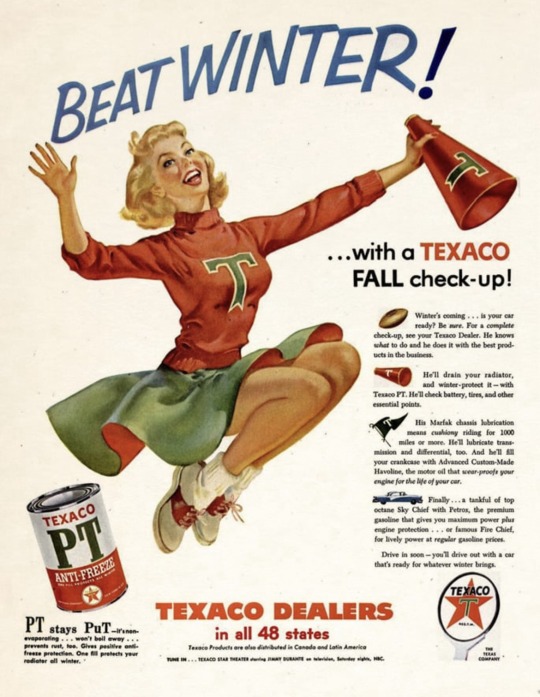
1955 Texaco Gas Stations advertising
#1955#Texaco#gas station#cheerleader#fall#winter#check up#car#automobile#vintageadsmakemehappy#vintage magazine#vintage advertising#magazine#advertising#1950s#50s#gas#station#oil#mechanic
85 notes
·
View notes
Text







a lot of idiots from a few days ago . Since I can’t draw anythinf new rn
#soooo sludgin tired and I slept so much today#itft#art#its time for the#itft no way#itft no ways#itft refill station#itft shrimpy#itft oil pastel#itft wheel#itft inky
14 notes
·
View notes
Text










Standard Oil Gas Station, Nan Island, Montreal, Canada,
The station was commissioned by Imperial Oil in 1966, It ceased to be commercially operated in 2008 and the city of Montreal listed it as a heritage building in 2009 before initiating the project of a youth and senior activity centre.
Designed by Mies van der Rohe in collaboration with architect Paul H. Lapointe
#art#design#architecture#architects#interiors#minimalism#iconic architecture#mid century modern#standard oil#esso#gas station#nan island#canada#montreal#imperial oil#heritage building#mies van der rohe#paul H. lapointe
14 notes
·
View notes
Text

“Rich OIl”, 1984 by Norman Engel
50 notes
·
View notes
Text
Am back to pack my dinner from Western Boy Express on the way back from office. Ordered the S$8.90 Chicken Steak Aglio Olio (鸡扒蒜香意面) plus add in S$3 set meal and extra S$0.50 takeaway box surcharge. Trust me, it is worth to make it a set meal as you get a crisp salad, cheesy fries and creamy mushroom soup to go with the main course. The pan-fried boneless chicken thigh can barely fit inside the box atop the olive oil-based spaghetti. The skin is charred and crispy while the chicken still remains juicy and tender.




#Western Boy Express#Kopitiam#Sembawang MRT Station#Western#Chicken Steak Aglio Olio#鸡扒蒜香意面#Set Meal#Boneless#Pan-Fried#Chicken Thigh#Charred#Crispy#Juicy#Spaghetti#Pasta#Noodles#Garlic#Dried Chilli#Olive Oil#Fries#Potato#Nacho Cheese Sauce#Mayonnaise#Salad#Mushroom Soup#Takeaway#Packed#Dinner#Food#Buffetlicious
39 notes
·
View notes
Text
Gas Station Stream of Consciousness Post
Gas Stations as Liminal Spaces
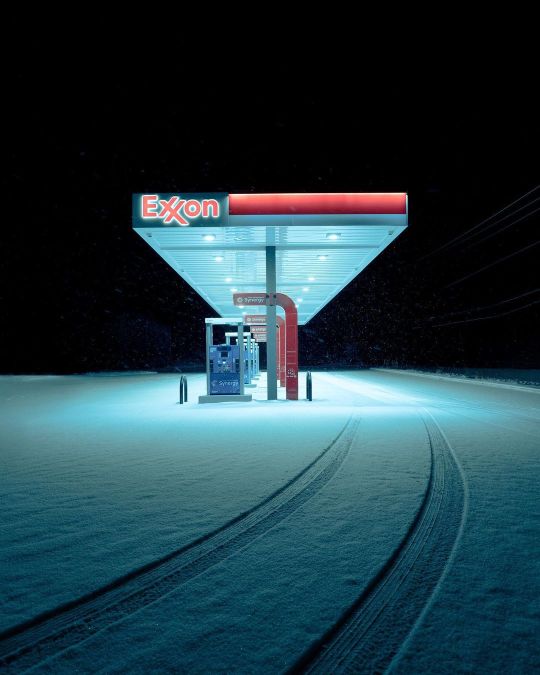
I've had quite a few hyperfixations in my day - ATMs, laundry detergents, credit cards - so my current one pertaining to gas stations is fitting considering my affinity for liminal spaces and the dedication of this blog to them. Liminal spaces are transitory in nature, hence their portrayal in online circles through photos of carpeted hallways, illuminated stairwells, dark roads, and backrooms, among other transitional points.

Gas stations are posted online as well; images of their fuel pumps or neon signage photographed through a rainy car window communicate their liminality and the universal experiences they provide to all of society. Perhaps they are the ultimate specimen of a liminal space. The machines they are created for, automobiles and tractor trailers alike, themselves are tools for motion, vestibules that enable travel and shipment across long distances at high speeds. Cars and roads are liminal spaces, albeit in different formats, and gas stations serve as their lighthouses. Vehicles at filling stations, therefore, are in a sense liminal spaces within liminal spaces within liminal spaces.
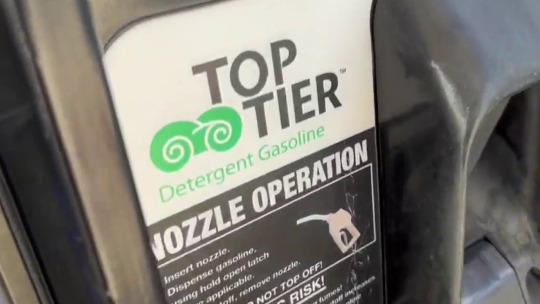
The uniqueness of a gas station as a liminal space, however, is its intersection with the economics and aesthetics of capitalism. Gasoline (and diesel fuel) is a commodity, downstream from crude oil, merely differentiated by octane ratings. Some argue that minute distinctions between agents, detergents, and additives make some brands better than others. Indeed, fuels that are approved by the Top Tier program, sponsored by automakers, have been shown to improve engine cleanliness and performance, but this classification does not prefer specific refiners over others; it is simply a standard. To a consumer, Top Tier fuels are themselves still interchangeable commodities within the wider gasoline commodity market.
The Economics of Gas Stations

The market that gas stations serve is characterized by inelastic demand, with customers who reckon with prices that fluctuate day in and day out. This is not to say that consumer behavior does not change with fuel prices. It has been observed that as prices rise, consumers are more eager to find the cheapest gas, but when prices fall, drivers are less selective with where they pump and are just happy to fill up at a lower price than last week. In response, gas stations lower their prices at a slower rate than when increasing prices, allowing for higher profit margins when wholesale prices fall. This has been dubbed the "rockets and feathers" phenomenon.

When portrayed as liminal spaces, gas stations are most often depicted at night, places of solitude where one may also enter the adjacent convenience store and encounter a fellow individual who isn't asleep, the modern day lightkeeper. The mart that resides at the backcourt of a gas station is known to sell goods at higher prices than a supermarket, simultaneously taking advantage of a captive customer, convenient location, and making up for the inefficiencies of a smaller operation. It may come as no surprise, then, that gas stations barely make any money from fuel sales and earn their bulk through C-store sales. This is a gripe I have with our economic system. Business is gamified, and in many cases the trade of certain goods and services, called loss leaders, is not an independent operation and is subsidized by the success of another division of a business, a strategy inherently more feasible for larger companies that have greater scale to execute it.
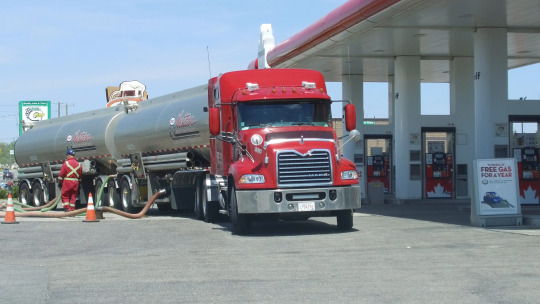
Nevertheless, most gas station owners, whether they have just one or hundreds of sites, find this method fruitful. Even though most gas stations in the US sell one of a handful of national brands, they operate on a branded reseller, or dealer, model, with oil companies themselves generally not taking part in the operations of stations that sell their fuels. The giants do still often have the most leverage and margin in the business, with the ability to set the wholesale price for the distributor, which sells at a markup to the station owner, which in turn will normally make the least profit in the chain when selling to the end customer at the pump. This kind of horizontal integration that involves many parties lacks the synergies and efficiencies of vertical integration that are so applauded by capitalists, but ends up being the most profitable for firms like ExxonMobil, who only extract and refine oil, and on the other end of the chain merely license their recognizable brands to the resellers through purchasing agreements. Furthermore, in recent years, independent dealers have sold their businesses to larger branded resellers, in many cases the ones from whom they had been buying their fuel.
A Word on ExxonMobil's Branding Potential
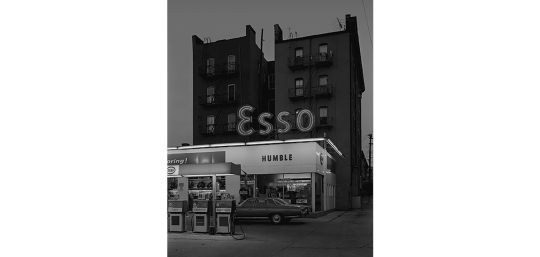
The largest publicly traded oil company in the world is Exxon Mobil Corporation. It is a direct descendent of the Rockefeller monopoly, Standard Oil, which was broken up in 1911 into 34 companies, the largest of which was Jersey Standard, which became Exxon in 1973. This title was generated by a computer as the most appealing replacement name to be used nationwide to unify the Humble, Enco, and Esso brands, decades before AI was spoken of. The latter brand is still used outside of the United States for marketing, arising from the phonetic pronunciation of the initials of Standard Oil. In 1999, Exxon and Mobil merged, and the combined company to this day markets under separate brands. Exxon is more narrowly used, to brand fuel in the United States, while Mobil has remained a motor oil and industrial lubricant brand, as well as a fuel brand in multiple countries.

Mobil originated in 1866 as the Vacuum Oil Company, which first used the current brand name for Mobiloil, and later Mobilgas and Mobilubricant products, with the prefix simply short for "automobile". Over time, Mobil became the corporation's primary identity, with its official name change to Mobil Oil Corporation taking place in 1966. Its updated wordmark with a signature red O was designed by the agency Chermayeff & Geismar, and the company's image for service stations was conceived by architect Eliot Noyes. New gas stations featured distinctive circular canopies over the pumps, and the company's recognizable pegasus logo was prominently on display for motorists.

I take issue with the deyassification of the brand's image over time. As costs were cut and uniformity took over, rectangular canopies were constructed in place of the special ones designed by Noyes that resembled large mushrooms. The pegasus remained a prominent brand icon, but the Mobil wordmark took precedence, which I personally believe to be an error in judgement. This disregard for the pegasus paved the way for its complete erasure in 2016 with the introduction of ExxonMobil's "Synergy" brand for its fuel. The mythical creature is now much smaller and appears only at the top right corner of pumps at Mobil gas stations, if at all.

Even into the 90s and the 21st century the Pegasus had its place in Mobil's marketing. In 1997, the company introduced its Speedpass keytag, which was revolutionary for its time and used RFID technology, akin to mobile payments today, to allow drivers to get gas without entering the store or swiping a card. When a Speedpass would be successfully processed, the pegasus on the gas pump would light up red.
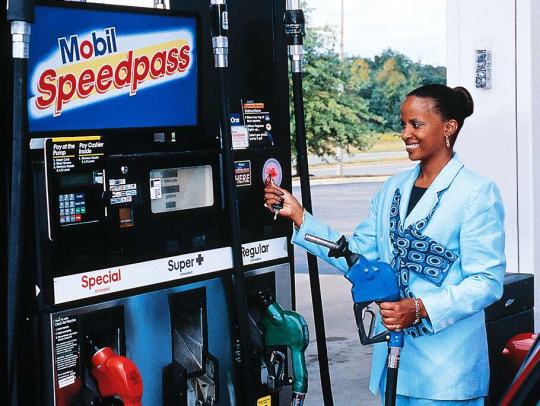
When Exxon and Mobil merged in 1999, the former adopted the payment method too, with Exxon's less iconic tiger in place of the pegasus.

The program was discontinued in 2019 in favor of ExxonMobil's app, which is more secure since it processes payments through the internet rather than at the pump.
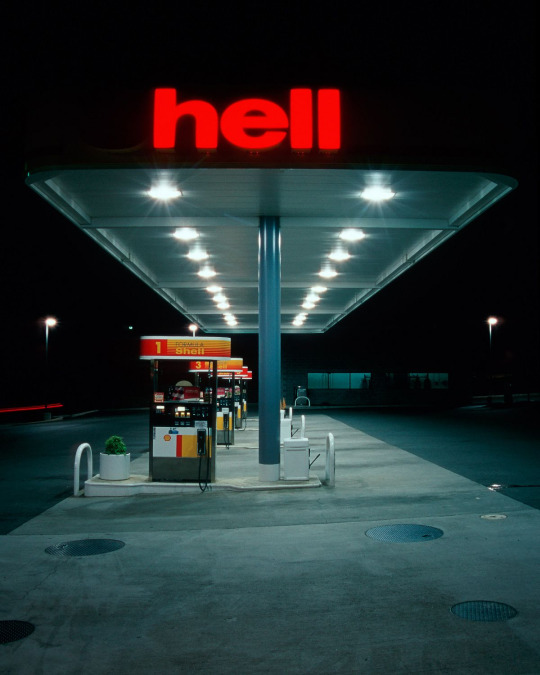
What Shell has done with its brand identity is what Mobil should've done for itself. The European company's logo was designed in 1969 by Raymond Loewy, and is a worth contender for the "And Yet a Trace of the True Self Exists in the False Self" meme. In recent years, Shell went all in on its graphic, while Mobil's pegasus flew away. I choose to believe that the company chose to rebrand its stations in order to prevent the malfunction in the above image from happening.

ExxonMobil should have also discontinued the use of the less storied Exxon brand altogether, and simplifying its consumer-facing identity to just the global Mobil mark. Whatever, neither of the names are actual words. As a bonus, here is a Google map I put together of all 62 gas stations in Springfield, MA. This is my idea of fun. Thanks for reading to the end!
#exxonmobil#exxon#mobil#gas station#gas stations#liminal space#liminal spaces#liminal#liminalcore#liminal aesthetic#justice for pegasus#shell#corporations#capitalism#branding#marketing#standard oil#economics#gas#gasoline#fuel#oil companies
108 notes
·
View notes
Note
How difficult is it for outsiders to adapt to clammew when joining the clans?
It depends slightly on the outsider!
Clanmew/Townmew
For Iceheart, Brushburn, Snapstorm, Boulder, Russetfur, and Firestar, it was not too difficult. Clanmew and Townmew are sister languages, Clanmew being a mix of Old Tribemew and Parkmew, and Townmew being a mix of Middle Townmew and Clanmew.
So there are shared words, phrases, and the grammatical structure is very similar. Communicating the intention is pretty easy if you slow down and take the time to listen, though Townmew as a language is a lot slower, longer, and more "polite" than Clanmew.
When Tigerstar commanded that Scourge attack, Scourge understood it perfectly. Tigerstar also would have been able to understand him when he said, "My warriors are not yours to command."
So learning either language isn't difficult.
Clanmew/Tribemew
Mintflower, a cat from the Tribe, and Stormfur, a cat going TO the Tribe, have a much harder time. Medics of the Tribe learn Old Tribemew as a way of connecting to their ancestors, but speak Modern Tribemew in everyday conversation. It's sorrttaaa (but not entirely) like learning to speak Latin, only this is a world where a Latin-speaking ghost could tell you that your Latin sucks
And Modern Tribemew is HELL ON EARTH for a Clan cat to speak.
We're going to be putting tense into Clanmew 102, but Clanmew has THREE stems for past/present/future. A really easy way to illustrate this is the word for "pummel" or "strike rapidly;" "Pabrpabrpabr/Pabrpabr/Pabr." See how the word shrinks as it becomes future tense?
Another example is "Melted/melting/will melt" = "Bmubu/Bmub/Bmu"
Now THROW THAT OUT because Modern Tribemew has decided that only ONE stem will remain. Then, they modify the verb with a prefix. For example, you know how English says, "MELT-ING"? In Modern Tribemew, that's "ING-MELT"
But the fossilized stem is "random" to Clan cats. So a Tribe cat might say,
English: "The ice is melting"
Tribemew (grammatical equivalent): "Ice ing-melt you-can-see"
Clanmew: "Pi skyyffs bmubwang rarrgrryr" (I see the ice contains meltingness) [note: the use of rarr also warns for caution, this line could also be translated as "The ice is melting so be careful"]
Tribemew (Clan cat POV): "FREEZE (???)-WILL-MELT I-SEE-(???)"
But, thankfully, old Tribemew also follows OSV word order and has a lot more in common with Clanmew. So Mintflower, who was a Tribe medic, and Stormfur, who was joining to be with Brook, who was also a Tribe medic, had a much easier time adapting than someone just dead joining with no connections.
Modern Tribemew is a really common language in the area though, so it's not usually a problem for them.
Clanmew/Guardmew or Seamew
HARD.
Jessy, Stormcloud, Olivenose, and the cats that followed Tigerheart/Heartstar home from the Guardian cats have a language separated by massive distance, isolation, and generations over 100 years apart, that's like 1,000 in cat time. This is as distant as English, Gaelic, and Welsh.
And Seamew (The language of cats who live in the town west of the lake, by the sea) is a different language from Guardmew entirely. So Stormcloud, Olivenose, and Jessy (Seamew) can only understand a lick of what Blazefire, Antfur, or Cinnamontail are saying in their native tongue (Guardmew).
#Clanmew#Conlang#Linguistics#Clan culture#Also Olivenose is a kittypet both in my AU and in the correctness of the universe#whered the hell they see olives in england im being possessed by an angry roman soldier#i am stationed in this gray ass bogland deprived of olive oil and i am writing my gay lover furiously#better bones au
131 notes
·
View notes